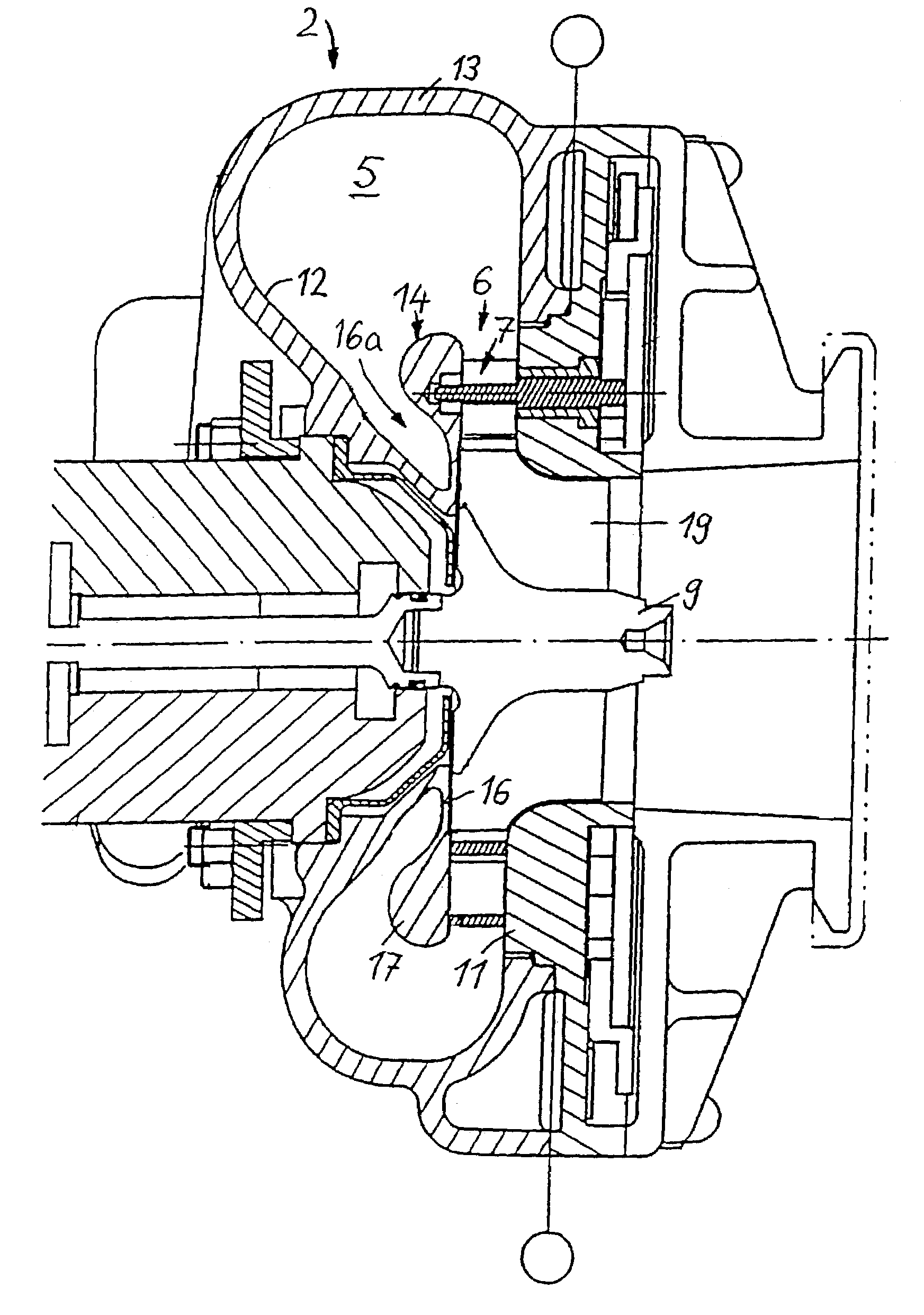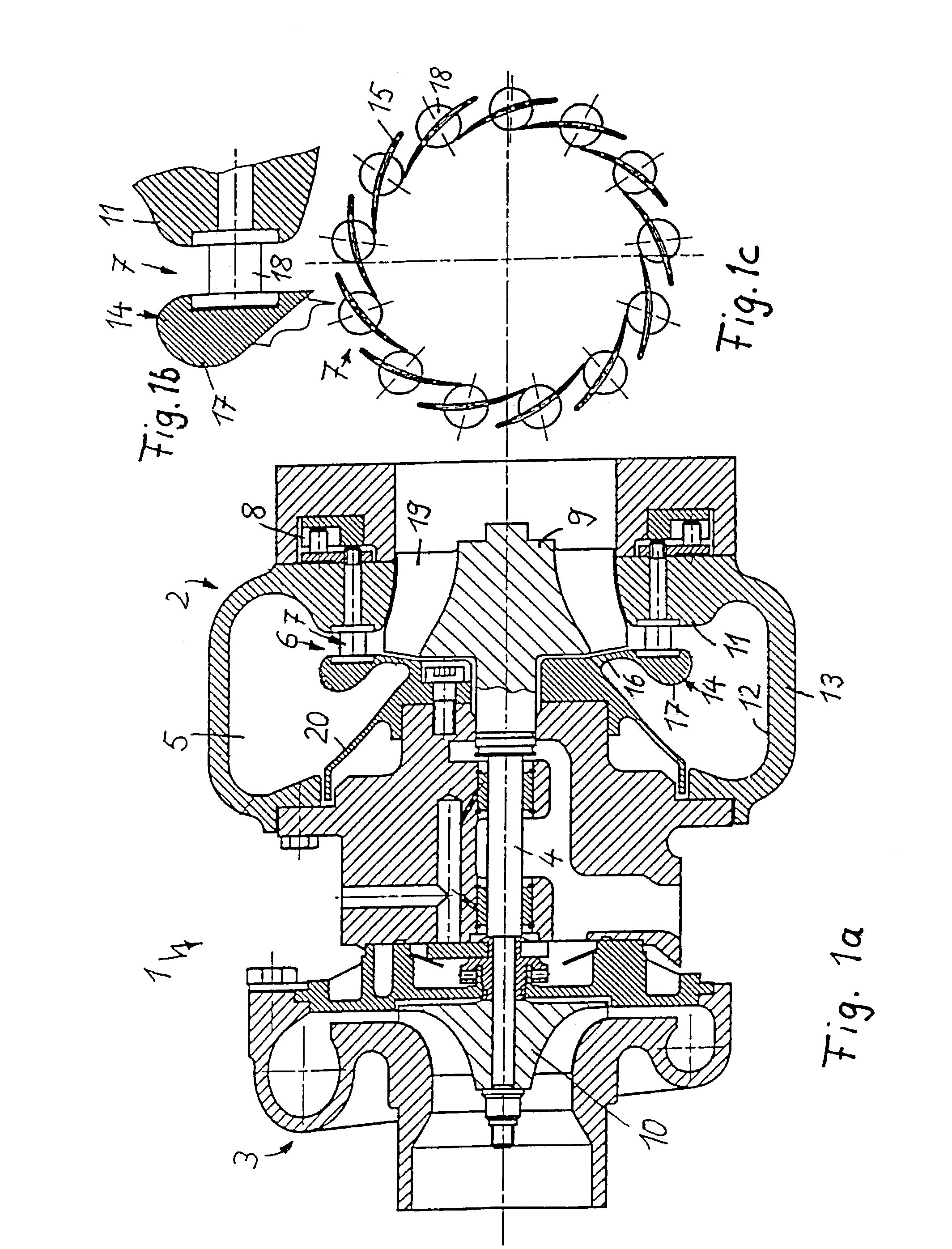Exhaust-gas turbocharger for an internal combustion engine with variable turbine geometry
- Summary
- Abstract
- Description
- Claims
- Application Information
AI Technical Summary
Benefits of technology
Problems solved by technology
Method used
Image
Examples
Embodiment Construction
[0021]Throughout the following figures, identical components are in each case provided with the same reference numerals.
[0022]The exhaust-gas turbocharger 1 for an internal combustion engine, which is illustrated in FIG. 1a, comprises an exhaust-gas turbine, in the form of a radial turbine 2, and a compressor 3. A turbine wheel 9 of the radial turbine 2 is connected in a rotationally fixed manner, via a shaft 4, to a compressor impeller 10 of the compressor 3. When the internal combustion engine is operating, exhaust gas from the engine is passed into a radial gas inlet duct of the radial turbine and fed via a radial inlet flow passage to the turbine wheel 9, the rotation of which is transmitted via the shaft 4 to the compressor impeller 10. As a result, combustion air, which has been sucked into the compressor 3, is compressed and is fed to the cylinder intake passages of the engine.
[0023]A variable turbine vane structure 7, which can be adjusted, by means of an actuating device 8,...
PUM
 Login to View More
Login to View More Abstract
Description
Claims
Application Information
 Login to View More
Login to View More - Generate Ideas
- Intellectual Property
- Life Sciences
- Materials
- Tech Scout
- Unparalleled Data Quality
- Higher Quality Content
- 60% Fewer Hallucinations
Browse by: Latest US Patents, China's latest patents, Technical Efficacy Thesaurus, Application Domain, Technology Topic, Popular Technical Reports.
© 2025 PatSnap. All rights reserved.Legal|Privacy policy|Modern Slavery Act Transparency Statement|Sitemap|About US| Contact US: help@patsnap.com



